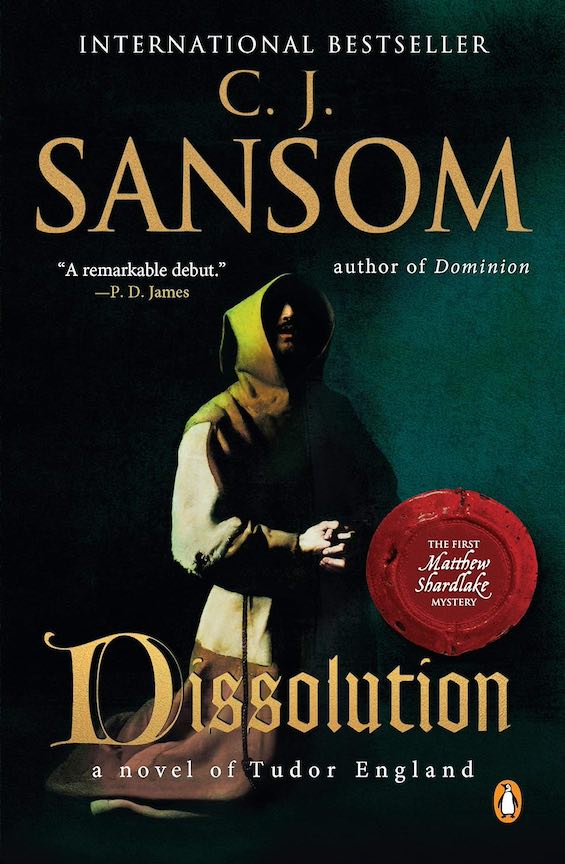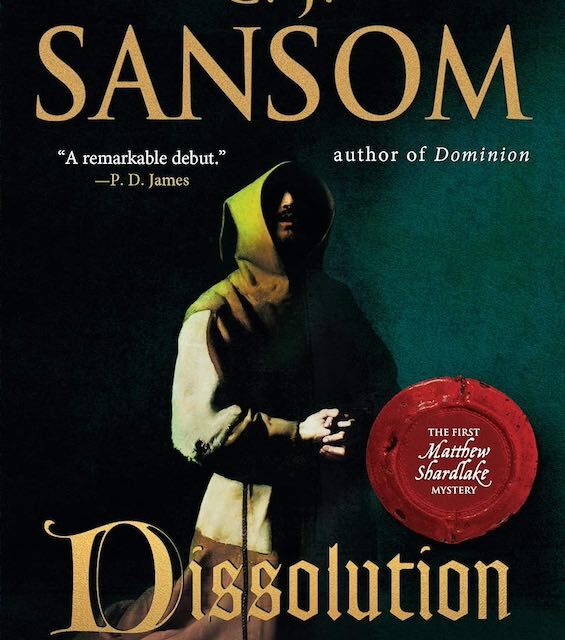
Over 1,200 years of its tumultuous history, sixty-three men and women have ruled England. But no monarch, man or woman, has gained more attention from historians and novelists alike than Henry VIII. After all, whose life could measure up in sheer drama? And whose reign was more consequential for British history? Yet, among historical novelists at least, most of the attention has fastened on the six women who shared Henry’s bed as queen. But there is drama aplenty in the policies King Henry pursued, too. And, in an outstanding debut in historical fiction, C. J. Sansom writes about one of the most momentous of those policies: the dissolution of the monasteries.
The staggering dimensions of the Dissolution
Over the five years from 1536 to 1541, Henry VIII “dissolved” the nearly 900 religious houses in England, Wales, and Ireland. He seized their assets and pensioned off the men and women who had lived within their walls. And what he gained was wealth beyond imagining. The Church was the largest landowner in England, owning around a quarter of the nation’s land. And the monasteries harbored stupendous riches, reflecting five centuries of income from credulous worshippers and lavish bequests from noble families.
All told, Henry gained an eye-opening total of 1.3 million pounds, probably the equivalent of about $2.6 billion today. At the time, an English laborer earned a wage of one pound a year, and the country’s population was only 2.5 million. So, at a single stroke, the king confiscated about as much money as half the country’s population earned in a year. Of course, the land he acquired was worth much, much more. Immeasurably more.
Dissolution (Matthew Shardlake #1) by C. J. Sansom (2003) 416 pages ★★★★★

A mission to solve a murder and serve the king
Matthew Shardlake is a lawyer, and a good one. He is also a hunchback in an era when superstition reigned and people thought hunchbacks brought bad luck. For years Shardlake has been in and out of favor with Thomas Cromwell (1485-1540), Henry VIII’s chief minister and mastermind of the English Reformation. Now, in November 1536, Cromwell sends him off to investigate a murder at the Monastery of St. Donatus at Scarnsea, in Sussex, on the Channel shore. Someone there had murdered Robin Singleton, the lawyer Cromwell had sent there earlier to coax the abbott to surrender the monastery to the king.
A Royal Commissioner like Singleton with virtually unlimited power, Shardlake sets off with his young assistant, Mark Poer. Now, Shardlake’s mission is doubly challenging: to solve the murder and gain possession of the monastery for Lord Cromwell. And the task would soon grow more demanding still, as Singleton’s murder proves to be only the first. Little did Shardlake know that the events he set in motion over the next two weeks would change both his and Mark’s lives forever—and those of the sixty monks and thirty servants who live at St. Donatus.
About the author

Christopher John Sansom, who writes as C. J. Sansom, has written nine historical novels to date. He is best known for the seven in the Matthew Shardlake series. He was born in 1952 in Edinburgh, Scotland, and later earned a BA and a PhD in History from the University of Birmingham. Sansom trained and practiced as a solicitor for the disadvantaged for a time but soon turned to full-time writing. He has won several awards from Britain’s Crime Writers’ Association (CWA). He was a major donor to the campaign against Scottish independence.
Sansom died in April 2024. For a revealing obituary about his solitary life, see “C.J. Sansom, Mystery Novelist Drawn to Tudor England, Dies at 71” (New York Times, May 6, 2024).
For related reading
I’ve since reviewed the next three books in this series:
- Dark Fire (King Henry VIII’s search for an ancient superweapon)
- Sovereign (A lawyer for the Crown in the time of Henry VIII)
- Revelation (Religious fanatics and other madmen in Tudor times)
And I’ve reviewed Sansom’s superb alternate history, Dominion (A what-if history of the English Resistance).
You’ll find similar works at:
- 25 most enlightening historical novels
- Top 10 historical mysteries and thrillers
- Top 20 suspenseful detective novels
And here you’ll see novels of suspense set in a slightly later period: Mysteries set in Elizabethan England.
And you can always find my most popular reviews, and the most recent ones, on the Home Page.


























